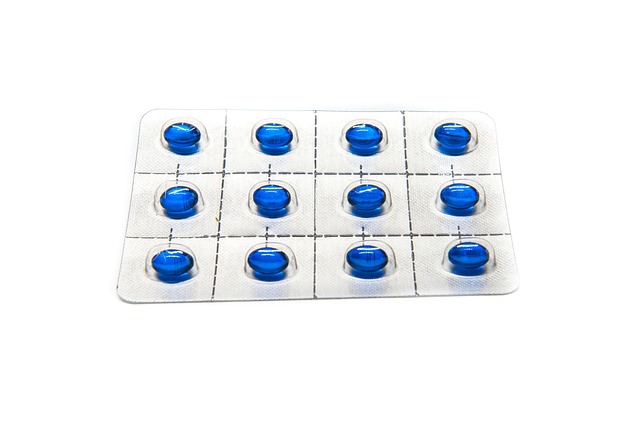Semaglutide medication is a groundbreaking GLP-1 receptor agonist that revolutionizes diabetes management by mimicking natural body hormones. It effectively regulates blood sugar levels, reduces glucose intake, and stimulates insulin production. With its long-acting formulation, semaglutide offers convenience, weight management benefits, and significant improvements in glycemic control for type 2 diabetics. While temporary gastrointestinal side effects may occur, professional medical supervision ensures safe use and optimal results with minimal risks. Real-world applications and patient success stories highlight its potential to transform diabetes care, combining blood sugar control and weight loss for enhanced health outcomes. Ongoing research expands its potential as a long-term solution for various metabolic disorders.
“Discover how semaglutide medication is revolutionizing diabetes management. This powerful therapy has proven effective in lowering blood sugar levels, offering a promising solution for those living with this chronic condition. From understanding blood sugar dynamics and diabetes types to exploring the science behind semaglutide’s mechanism of action, this article covers everything you need to know. Learn about its benefits, administration guidelines, potential side effects, real-life success stories, and future research prospects.”
Understanding Blood Sugar Levels and Diabetes

Blood sugar levels, also known as blood glucose, refer to the amount of glucose (a type of sugar) present in your bloodstream at any given time. Glucose is essential for providing energy to cells and tissues throughout your body. However, maintaining healthy blood sugar levels is crucial, especially for individuals with diabetes. Diabetes is a chronic condition characterized by high blood sugar levels due to either insufficient insulin production or the body’s inability to use insulin effectively. Insulin is a hormone that helps facilitate glucose entry into cells, where it’s used for energy.
One effective medication in managing blood sugar levels is semaglutide, a type of injectable drug designed to mimic a natural hormone that slows down digestion and promotes feelings of fullness, thereby reducing overall sugar intake. By slowing gastric emptying, semaglutide helps reduce the amount of glucose absorbed into the bloodstream after meals. This action complements insulin’s role in lowering blood sugar levels, making it a valuable tool for diabetes management.
What is Semaglutide? A Comprehensive Overview

Semaglutide is a medication that has gained significant attention for its ability to lower blood sugar levels effectively, making it a game-changer in diabetes management. It belongs to a class of drugs known as glucagon-like peptide-1 (GLP-1) receptor agonists, which mimic the natural hormones produced by your body to regulate blood sugar. This innovative semaglutide medication works by slowing down the emptying of your stomach, leading to reduced glucose absorption and increased insulin secretion when blood sugar levels rise.
This versatile drug is administered via injection and has shown remarkable results in clinical trials. Semaglutide not only aids in glycemic control but also offers potential benefits for weight management, making it a comprehensive solution for certain patients with type 2 diabetes. Its long-acting formulation ensures sustained effects, providing convenience and improved quality of life for those who use it.
How Semaglutide Medication Works to Lower Blood Sugar

Semaglutide medication works by mimicking a natural hormone in your body called GLP-1, which helps regulate blood sugar levels. When you have diabetes, your body may not produce enough of this hormone, leading to high blood sugar. Semaglutide mimics GLP-1’s actions, stimulating insulin production when blood sugar is high and slowing the release of glucagon, a hormone that raises blood sugar. This dual action helps lower blood sugar levels effectively.
The medication also increases feelings of fullness, which can help with weight management—a significant benefit as obesity is a risk factor for type 2 diabetes. By targeting both blood sugar control and weight loss, semaglutide offers a comprehensive approach to managing diabetes, improving overall health outcomes for patients.
Benefits of Using Semaglutide for Diabetes Management

Semaglutide, a medication designed for diabetes management, offers significant advantages in effectively lowering blood sugar levels. It mimics a natural hormone that helps regulate hunger and metabolism, making it not just an effective treatment but also a convenient one. Semaglutide is known to reduce HbA1c (a measure of long-term blood sugar control) by up to 1.5% in type 2 diabetes patients, providing substantial benefits for overall glycemic control.
Beyond its ability to lower blood sugar levels, semaglutide can also aid in weight management, which is crucial for diabetics as it reduces the risk of various complications associated with both high blood sugar and obesity. Its once-weekly injection schedule makes it a convenient option compared to more frequent insulin administrations, improving patient adherence to treatment regimens.
Administering Semaglutide: Injection and Dosage Guidelines

Semaglutide is a medication that has shown significant effectiveness in lowering blood sugar levels, particularly for individuals with type 2 diabetes. It’s administered through subcutaneous injection, offering a convenient and potentially life-changing treatment option. The dosage of semaglutide should be tailored to each patient’s needs, starting at a low dose and gradually increasing as tolerated. Typically, the injections are given once weekly, allowing for consistent blood sugar control.
For optimal results, it’s crucial to follow the prescribed dosage guidelines. Patients usually begin with a starting dose of 0.25 mg or 0.5 mg, depending on their medical history and current health status. Over time, the dosage can be adjusted up to a maximum of 1 mg per week, as recommended by healthcare professionals. Regular monitoring of blood sugar levels is essential during this process to ensure the medication is working effectively and to minimize any potential side effects.
Potential Side Effects and Precautions with Semaglutide Use

Semaglutide, as a medication, has proven effective in lowering blood sugar levels for individuals with type 2 diabetes. However, like any treatment, it’s crucial to be aware of potential side effects. Common experiences include nausea, vomiting, and diarrhea, which are often mild and temporary. These gastrointestinal symptoms are usually the body’s initial response to starting semaglutide therapy.
While generally well-tolerated, semaglutide use requires professional medical supervision. It’s essential for individuals taking this medication to report any persistent or severe side effects, especially those related to the gut, as well as signs of low blood sugar (hypoglycemia). Regular monitoring and adjustments to dosage by a healthcare provider are vital to ensure optimal management of blood sugar levels while minimising potential risks associated with semaglutide.
Real-Life Success Stories: Semaglutide Transforms Lives

In the realm of managing blood sugar levels, real-life success stories highlight the transformative power of semaglutide medication. Many patients have shared their journeys, testifying to the effectiveness of this innovative treatment in tackling type 2 diabetes. Semaglutide has emerged as a game-changer, offering substantial improvements in glycemic control and helping individuals achieve long-sought-after stability in their blood sugar levels.
These success stories paint a vivid picture of how semaglutide medication can lead to significant lifestyle changes. By reducing blood sugar levels efficiently, patients have reported increased energy, improved overall health, and a renewed sense of well-being. The medication’s ability to mimic natural hormones has proven crucial in facilitating weight loss, another critical aspect of diabetes management. Real-life experiences serve as a testament to the potential of semaglutide to revolutionize diabetes care, providing hope and encouragement for those navigating this chronic condition.
Exploring Future Research and Advancements in Semaglutide Therapy

The future of diabetes management looks promising with ongoing research focusing on expanding the role of semaglutide medication. Further studies are exploring its potential as a long-term solution, not just for type 2 diabetes but also for other metabolic disorders. Scientists are investigating the effects of semaglutide in combination with other treatments and assessing its safety over extended periods. This includes examining its ability to prevent complications associated with prolonged high blood sugar levels, such as cardiovascular diseases and kidney damage.
Advancements in delivery methods are also on the horizon. Researchers are working on developing more convenient administration techniques for semaglutide medication, aiming to improve patient compliance and adherence to treatment regimens. These innovations could potentially revolutionize diabetes care by offering a more seamless experience for patients while maintaining effective blood sugar control.
